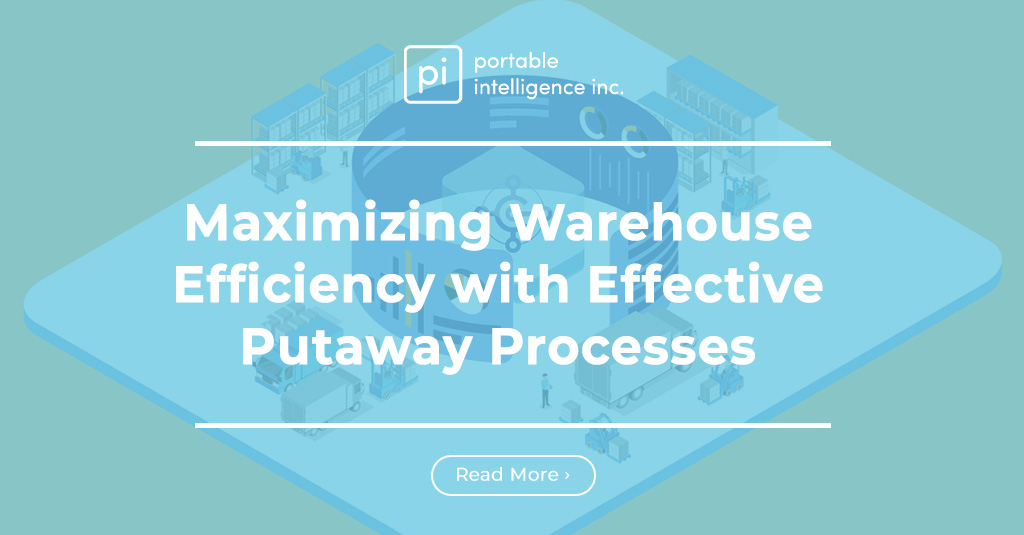In today’s fast-paced business environment, efficient warehouse management has become a critical aspect of ensuring a company’s success. With the rise of e-commerce and consumer expectations for speedy deliveries, warehouses play a pivotal role in the supply chain. To optimize their operations and meet the demands of the market, businesses are increasingly turning to Warehouse Management Systems (WMS) as a solution.
A Warehouse Management System (WMS) is a software application that facilitates the day-to-day operations of a warehouse, streamlining processes from inventory management to order fulfillment. It acts as the central nervous system of the warehouse, overseeing and coordinating various tasks to maximize efficiency, accuracy, and productivity.
The importance of having well-organized and smooth warehouse operations cannot be overstated. Inefficiencies within the warehouse can lead to errors in order processing, stockouts, excess inventory, increased labor costs, and dissatisfied customers. In contrast, an effective WMS can optimize inventory control, reduce operating expenses, improve order accuracy, enhance customer service, and provide valuable insights through data analytics.
Running a warehouse can be a complex and challenging task, and various issues may arise over time. Recognizing the signs that indicate your warehouse operations need improvement is the first step toward understanding when the right time is to consider implementing a Warehouse Management System (WMS). Here are some key indicators that suggest your warehouse may benefit from a WMS:
- Inefficiencies in Inventory Management: If your warehouse struggles with maintaining accurate inventory records, experiences frequent stockouts or overstock situations, and has difficulty tracking the movement of goods, it is a clear sign that your inventory management processes need improvement. Inaccurate inventory data can lead to fulfillment delays, dissatisfied customers, and increased carrying costs.
- Difficulty in Tracking Inventory and Order Fulfillment: When order processing becomes a manual and time-consuming process, with staff members struggling to locate products within the warehouse, it indicates a lack of efficient tracking mechanisms. Inefficient order fulfillment can lead to delayed shipments and negatively impact customer satisfaction.
- High Labor Costs and Inaccurate Workforce Management: Excessive labor costs and inefficiencies in workforce management can significantly impact the overall profitability of your warehouse. If your labor expenses are rising, and there is a lack of visibility into employee performance and productivity, a WMS can help optimize labor allocation and improve workforce efficiency.
- Lack of Real-Time Visibility into Warehouse Processes: Without real-time data on inventory levels, order statuses, and overall warehouse performance, making informed decisions becomes a challenge. A lack of visibility can lead to missed opportunities for process optimization and hinder the ability to respond swiftly to changing market demands.
- Rising Number of Errors and Returns: An increase in order errors and product returns can be indicative of underlying problems in your warehouse operations. Mistakes like shipping the wrong products or delivering damaged goods can severely impact your reputation and profitability.
- Limited Scalability: As your business grows, manual and paper-based warehouse processes may struggle to keep up with increased order volumes and inventory complexity. If your warehouse lacks the scalability to accommodate growth, it might be the right time to invest in a WMS.
- Increasing Customer Complaints: A surge in customer complaints regarding delayed shipments, wrong items, or poor order accuracy can be a clear signal that your warehouse operations need improvement. Meeting customer expectations is crucial for maintaining a loyal and satisfied customer base.
Benefits of Implementing a Warehouse Management System
Recognizing the signs that your warehouse operations need improvement is just the beginning of the journey toward greater efficiency and productivity. The next step is to understand how implementing a Warehouse Management System (WMS) can address these challenges and bring numerous benefits to your warehouse operations. Let’s explore some of the key advantages of adopting a WMS:
- Streamlined Inventory Management: A WMS provides real-time visibility into your inventory levels, locations, and movements. With accurate and up-to-date inventory data, you can optimize stock levels, reduce the risk of stockouts, and minimize carrying costs. Automated inventory tracking ensures that you always know the exact quantity and location of each product, enabling efficient order fulfillment.
- Enhanced Order Fulfillment and Customer Satisfaction: By automating order processing and fulfillment tasks, a WMS enables faster and more accurate order picking and packing. This translates to shorter lead times and on-time deliveries, leading to improved customer satisfaction. The system can also prioritize and consolidate orders, reducing the number of shipments and transportation costs.
- Improved Labor Productivity and Resource Utilization: A WMS optimizes labor allocation by providing insights into employee performance and workload. It helps warehouse managers assign tasks efficiently and identify areas where additional training may be required. By streamlining picking routes and optimizing task assignments, a WMS maximizes workforce productivity and minimizes overtime expenses.
- Real-Time Data and Analytics for Informed Decision Making: With a WMS in place, warehouse managers have access to real-time data and analytics on key performance indicators (KPIs) such as order fill rates, inventory turnover, and workforce productivity. These insights enable data-driven decision making, allowing you to identify bottlenecks, track operational efficiency, and make strategic improvements.
- Increased Accuracy and Reduced Errors: Manual data entry and paper-based processes are prone to errors, leading to order inaccuracies and returns. By automating tasks like order picking and packing, a WMS significantly reduces the likelihood of human errors, resulting in improved order accuracy and decreased returns.
- Scalability for Business Growth: A robust WMS is designed to accommodate the growing needs of your business. As your warehouse expands and order volumes increase, the system can easily scale to handle the additional workload without compromising efficiency.
- Enhanced Integration with Other Business Systems: A WMS can integrate seamlessly with other enterprise systems, such as Enterprise Resource Planning (ERP) and Transportation Management Systems (TMS). This integration streamlines data flow between different departments, eliminating data silos and ensuring that all operations work in sync.
- Regulatory Compliance and Traceability: A WMS can help your warehouse comply with industry regulations and maintain accurate product traceability. This is particularly crucial in industries with strict quality control and safety requirements.
Evaluating Your Warehouse’s Readiness for a WMS
Before implementing a Warehouse Management System (WMS), it’s essential to evaluate your warehouse’s readiness for such a transformation. While a WMS offers numerous benefits, it may not be suitable for every warehouse at any given time. Conducting a thorough assessment will help you determine whether your warehouse is prepared for the adoption of a WMS. Here are some key factors to consider during the evaluation process:
- Warehouse Size and Complexity: The size and complexity of your warehouse operations play a significant role in determining the need for a WMS. Larger warehouses with high SKU counts and complex inventory management processes stand to benefit more from a WMS. Smaller warehouses with straightforward operations may find it more cost-effective to manage manually.
- Order Volume and SKU Count: If your warehouse handles a large volume of orders and has a substantial number of SKUs, managing them manually can become overwhelming. A WMS can efficiently handle the complexities and scale of processing high order volumes and a diverse product range.
- Integration with Existing Business Systems: Evaluate the compatibility of the WMS with your existing business systems, such as ERP, TMS, and e-commerce platforms. Seamless integration ensures smooth data flow between systems and reduces manual data entry, leading to a more efficient overall workflow.
- Staff Training and Technological Preparedness: A successful WMS implementation requires a team that is willing to embrace new technology and undergo proper training. Evaluate your staff’s readiness to adapt to the system and ensure they have the necessary skills to operate the WMS effectively.
- Return on Investment (ROI) Considerations: Assess the potential return on investment associated with implementing a WMS. Consider the cost of the system, ongoing maintenance, and the expected cost savings and efficiency gains over time. A well-implemented WMS should offer a positive ROI in the long run.
- Current Warehouse Performance Metrics: Analyze your warehouse’s current performance metrics to identify pain points and areas that need improvement. Understanding your warehouse’s strengths and weaknesses will help you determine how a WMS can address these challenges and enhance overall performance.
- Support from Top Management: Obtaining support from top management is crucial for the successful adoption of a WMS. Align the implementation with your organization’s strategic goals and secure the necessary resources and commitment from leadership.
- Flexibility and Customization Options: Consider whether the WMS is flexible and can be tailored to meet your warehouse’s specific requirements. Customization options ensure that the system aligns with your unique processes and workflows.
The Right Time to Get a WMS
After evaluating your warehouse’s readiness for a Warehouse Management System (WMS) and identifying areas that could benefit from improvement, it’s essential to consider the broader context of your business and determine the right time for implementation. While a WMS can bring numerous benefits to your warehouse operations, timing is crucial to maximize its impact. Here are some key scenarios that indicate the right time to get a WMS:
- Rapid Growth in Business and Warehouse Expansion: If your business is experiencing significant growth and your warehouse is expanding to accommodate increased demand, it’s an opportune moment to implement a WMS. A WMS can help you manage the higher order volumes and complex inventory requirements that come with business expansion.
- Consistent Inventory and Order Processing Issues: If your warehouse is grappling with consistent inventory inaccuracies, delays in order processing, and fulfillment errors, a WMS can streamline these operations. By providing real-time visibility and automating processes, a WMS can help resolve these issues and improve overall efficiency.
- Increasing Customer Expectations and Demands: As customer expectations for faster deliveries and accurate order fulfillment rise, it’s crucial to meet these demands to stay competitive. A WMS can enable you to enhance your customer service levels and deliver a seamless experience to your clients.
- Escalating Labor Costs and Turnover Rates: If labor costs are rising and employee turnover rates are high, it’s a sign that your warehouse may benefit from the labor optimization capabilities of a WMS. By automating tasks and optimizing workforce allocation, a WMS can help you make the most of your human resources.
- Seasonal Peaks and Fluctuations in Demand: For businesses with seasonal fluctuations in demand, a WMS can be highly advantageous. It allows you to scale operations up or down efficiently during peak seasons, ensuring smooth order processing and fulfillment.
- Strategic Business Initiatives: If your business is embarking on strategic initiatives, such as expanding to new markets or launching new product lines, a WMS can support these efforts by providing the necessary tools to manage increased complexity and operational challenges.
- Integration with New Technologies: As new technologies emerge and become integral to your business operations, a WMS can act as a central hub for integration. It enables seamless data flow between different systems, ensuring that your warehouse stays technologically connected.
- Industry and Regulatory Changes: Changes in industry regulations and compliance requirements may necessitate more accurate tracking and documentation of your products. A WMS can help ensure your warehouse adheres to the latest regulations and maintains product traceability.
Potential Challenges and How to Overcome Them
Implementing a Warehouse Management System (WMS) can be a transformative process for your warehouse operations, but like any major change, it may also present certain challenges. It’s essential to be aware of these potential roadblocks and have strategies in place to overcome them. Let’s explore some common challenges and ways to address them effectively:
- Initial Implementation Costs and ROI Concerns: One of the primary challenges of adopting a WMS is the initial investment required for purchasing and implementing the system. Concerns about the return on investment may arise, especially for smaller businesses. To overcome this challenge, conduct a thorough cost-benefit analysis to assess the long-term savings and efficiencies a WMS can bring. Consider the potential improvements in order accuracy, labor productivity, and inventory management that can lead to cost reductions and increased revenue over time.
- Resistance to Change Among Warehouse Staff: Implementing a WMS may face resistance from warehouse staff who are accustomed to existing manual processes. Address this challenge through effective communication and involving the staff in the decision-making process. Emphasize the benefits a WMS can bring to their daily tasks, such as reducing repetitive manual work and improving overall efficiency. Provide comprehensive training and support to help employees adapt to the new system and demonstrate its advantages.
- Integration Issues with Other Business Systems: Integrating a WMS with other existing business systems, such as ERP or TMS, may present technical challenges. To overcome this, work closely with the WMS provider and your IT team to ensure smooth integration. Choose a WMS that offers seamless integration options and compatibility with your existing systems to avoid data silos and improve overall workflow.
- Data Accuracy and Clean-Up: Implementing a WMS may expose data inaccuracies or inconsistencies within your current systems. Before implementing the WMS, conduct a thorough data audit and clean-up process to ensure that your inventory and order data are accurate and up to date. This step will prevent errors and discrepancies in the new system.
- Training and Adoption: Ensuring that all staff members receive proper training on the WMS is crucial for its successful adoption. Develop a comprehensive training program tailored to different roles within the warehouse. Offer ongoing support and assistance during the initial stages of implementation to help employees feel confident and comfortable using the new system.
- Change Management and Project Governance: Lack of effective change management and project governance can lead to delays and confusion during the implementation process. Establish a dedicated project team responsible for overseeing the implementation, set clear timelines and milestones, and ensure effective communication throughout the process. Regularly review progress and make necessary adjustments to keep the project on track.
- Scalability and Future Requirements: Consider the long-term scalability of the chosen WMS solution. Ensure that the system can accommodate future growth and changing business needs. Choose a WMS that offers flexibility and customization options to adapt to evolving requirements.
By proactively addressing these potential challenges and implementing appropriate strategies, you can ensure a smoother and more successful WMS implementation. Overcoming these obstacles will pave the way for improved warehouse efficiency, better customer service, and a more competitive position in the market.
How to Implement a WMS Successfully
Implementing a Warehouse Management System (WMS) is a significant undertaking that requires careful planning, collaboration, and attention to detail. A successful implementation can lead to substantial improvements in warehouse operations, while a poorly executed one may result in disruptions and inefficiencies. Here are the steps to guide you through a successful WMS implementation:
- Create a Detailed Implementation Plan: Develop a comprehensive implementation plan that outlines the project’s scope, objectives, timeline, and milestones. Identify key tasks and responsibilities for each team member involved in the implementation process. A well-defined plan serves as a roadmap and helps keep the project on track.
- Allocate Sufficient Time and Resources for Training: Training is a critical aspect of a successful WMS implementation. Allocate enough time for all employees to undergo thorough training on the new system. Provide training sessions that are tailored to different roles and responsibilities within the warehouse. Encourage staff to ask questions and seek clarification during the training process.
- Involve Warehouse Staff in the Implementation Process: Engage your warehouse staff in the implementation process from the beginning. Involve them in the requirements gathering, decision-making, and testing stages. Their input and feedback are valuable for tailoring the WMS to suit your warehouse’s unique workflows and ensuring smooth adoption.
- Set Up a Dedicated Project Team: Appoint a dedicated project team responsible for overseeing the implementation. This team should include representatives from various departments, such as IT, warehouse management, and operations. The team should work closely with the WMS provider to address any challenges and ensure timely progress.
- Conduct Rigorous Testing: Before fully deploying the WMS, conduct thorough testing to identify and address any issues or bugs. Perform testing in a controlled environment to simulate real-world scenarios and ensure the system operates as expected. Address and resolve any identified issues before the go-live date.
- Prioritize Data Migration and Clean-Up: Accurate and clean data is vital for a successful WMS implementation. Prioritize data migration from existing systems and ensure that data is correctly transferred to the new system. Perform data audits and clean-up to eliminate inaccuracies or inconsistencies in the data.
- Monitor Progress and Adjust as Necessary: Throughout the implementation process, monitor progress against the established milestones and objectives. Regularly review the project’s status and make adjustments as needed to address any challenges or delays. Effective communication between all stakeholders is key to maintaining momentum and resolving issues promptly.
- Conduct Parallel Operations and Transition Gradually: Consider conducting parallel operations by running both the existing system and the new WMS simultaneously during the transition phase. This approach allows you to compare results and identify any discrepancies, providing a safety net during the initial stages of the implementation.
- Provide Ongoing Support: Offer ongoing support and assistance to your warehouse staff as they adapt to the new system. Establish a support system to address any post-implementation questions or issues. Encourage feedback from employees and be responsive to their needs during the transition period.
- Celebrate Milestones and Achievements: Acknowledge and celebrate milestones and achievements during the implementation process. Recognize the efforts of the project team and the warehouse staff as they embrace the new system and contribute to its success.
By following these steps and best practices, you can ensure a smooth and successful WMS implementation. Remember that a successful implementation is not the end of the journey. Continue to monitor the system’s performance, gather feedback from users, and identify opportunities for further improvement to continuously optimize your warehouse operations. With a well-implemented WMS, your warehouse will be better equipped to meet customer demands, increase efficiency, and stay competitive in the dynamic business landscape.
Investing in a Warehouse Management System is a strategic decision that can revolutionize your warehouse operations and position your business for long-term success. By recognizing the signs that indicate a need for improvement, understanding the benefits of a WMS, and assessing your warehouse’s readiness, you can make an informed decision on the right time for implementation. Overcoming potential challenges, selecting the right WMS, and executing a successful implementation will pave the way for improved efficiency, accuracy, and productivity in your warehouse. Embrace the transformative power of a WMS to take your warehouse operations to new heights and achieve a competitive edge in the market.





